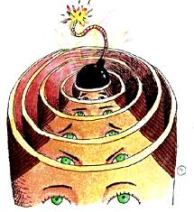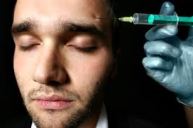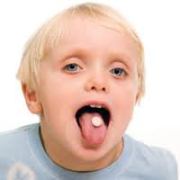 An article in the New York Times last week described the increasing use of stimulant medications such as Adderall and Ritalin among high-school students. Titled “The Risky Rise of the Good-Grade Pill,” the article discussed how 15 to 40 percent of students, competing for straight-As and spots in elite colleges, use stimulants for an extra “edge,” regardless of whether they actually have ADHD. In this blog, I’ve written about ADHD. It’s a real condition—and medications can help tremendously—but the diagnostic criteria are quite vague. As with much in psychiatry, anyone “saying the right thing” can relatively easily get one of these drugs, whether they want it or not.
An article in the New York Times last week described the increasing use of stimulant medications such as Adderall and Ritalin among high-school students. Titled “The Risky Rise of the Good-Grade Pill,” the article discussed how 15 to 40 percent of students, competing for straight-As and spots in elite colleges, use stimulants for an extra “edge,” regardless of whether they actually have ADHD. In this blog, I’ve written about ADHD. It’s a real condition—and medications can help tremendously—but the diagnostic criteria are quite vague. As with much in psychiatry, anyone “saying the right thing” can relatively easily get one of these drugs, whether they want it or not.
Sure enough, the number of prescriptions for these drugs has risen 26% since 2007. Does this mean that ADHD is now 26% more prevalent? No. In the Times article, some students admitted they “lie to [their] psychiatrists” in order to “get something good.” In fact, some students “laughed at the ease with which they got some doctors to write prescriptions for ADHD.” In the absence of an objective test (some computerized tests exist but aren’t widely used nor validated, and brain scans are similarly circumspect) and diagnostic criteria that are readily accessible on the internet, anyone who wants a stimulant can basically get one. And while psychiatric diagnosis is often an imperfect science, in many settings the methodology by which we assess and diagnose ADHD is particularly crude.
 Many of my colleagues will disagree with (or hate) me for saying so, but in some sense, the prescription of stimulants has become just like any other type of cosmetic medicine. Plastic surgeons and dermatologists, for instance, are trained to perform medically necessary procedures, but they often find that “cosmetic” procedures like facelifts and Botox injections are more lucrative. Similarly, psychiatrists can have successful practices in catering to ultra-competitive teens (and their parents) and giving out stimulants. Who cares if there’s no real disease? Psychiatry is all about enhancing patients’ lives, isn’t it? As another blogger wrote last week, some respectable physicians have even argued that “anyone and everyone should have access to drugs that improve performance.”
Many of my colleagues will disagree with (or hate) me for saying so, but in some sense, the prescription of stimulants has become just like any other type of cosmetic medicine. Plastic surgeons and dermatologists, for instance, are trained to perform medically necessary procedures, but they often find that “cosmetic” procedures like facelifts and Botox injections are more lucrative. Similarly, psychiatrists can have successful practices in catering to ultra-competitive teens (and their parents) and giving out stimulants. Who cares if there’s no real disease? Psychiatry is all about enhancing patients’ lives, isn’t it? As another blogger wrote last week, some respectable physicians have even argued that “anyone and everyone should have access to drugs that improve performance.”
When I think about “performance enhancement” in this manner, I can’t help but think about the controversy over medical marijuana. This is another topic I’ve written about, mainly to question the “medical” label on something that is neither routinely accepted nor endorsed by the medical profession. Proponents of medical cannabis, I wrote, have co-opted the “medical” label in order for patients to obtain an abusable psychoactive substance legally, under the guise of receiving “treatment.”
How is this different from the prescription of psychostimulants for ADHD? The short answer is, it’s not. If my fellow psychiatrists and I prescribe psychostimulants (which are abusable psychoactive substances in their own right, as described in the pages of the NYT) on the basis of simple patient complaints—and continue to do so simply because a patient reports a subjective benefit—then this isn’t very different from a medical marijuana provider writing a prescription (or “recommendation”) for medical cannabis. In both cases, the conditions being treated are ill-defined (yes, in the case of ADHD, it’s detailed in the DSM, which gives it a certain validity, but that’s not saying much). In both cases, the conditions affect patients’ quality of life but are rarely, if ever, life-threatening. In both cases, psychoactive drugs are prescribed which could be abused but which most patients actually use quite responsibly. Last but not least, in both cases, patients generally do well; they report satisfaction with treatment and often come back for more.
 In fact, taken one step further, this analogy may turn out to be an argument in favor of medical marijuana. As proponents of cannabis are all too eager to point out, marijuana is a natural substance, humans have used it for thousands of years, and it’s arguably safer than other abusable (but legal) substances like nicotine and alcohol. Psychostimulants, on the other hand, are synthetic chemicals (not without adverse effects) and have been described as “gateway drugs” to more or less the same degree as marijuana. Why one is legal and one is not simply appears to be due to the psychiatric profession’s “seal of approval” on one but not the other.
In fact, taken one step further, this analogy may turn out to be an argument in favor of medical marijuana. As proponents of cannabis are all too eager to point out, marijuana is a natural substance, humans have used it for thousands of years, and it’s arguably safer than other abusable (but legal) substances like nicotine and alcohol. Psychostimulants, on the other hand, are synthetic chemicals (not without adverse effects) and have been described as “gateway drugs” to more or less the same degree as marijuana. Why one is legal and one is not simply appears to be due to the psychiatric profession’s “seal of approval” on one but not the other.
If the psychiatric profession is gradually moving away from the assessment, diagnosis, and treatment of severe mental illness and, instead, treating “lifestyle” problems with drugs that could easily be abused, then I really don’t have a good argument for denying cannabis to patients who insist it helps their anxiety, insomnia, depression, or chronic pain.
Perhaps we should ask physicians take a more rigorous approach to ADHD diagnosis, demanding interviews with parents and teachers, extensive neuropsychiatric testing, and (perhaps) neuroimaging before offering a script. But in a world in which doctors’ reimbursements are dwindling, and the time devoted to patient care is vanishing—not to mention a patient culture which demands a quick fix for the problems associated with the stresses of modern adolescence—it doesn’t surprise me one bit that some doctors will cut corners and prescribe without a thorough workup, in much the same way that marijuana is provided, in states where it’s legal. If the loudest protests against such a practice don’t come from our leadership—but instead from the pages of the New York Times—we only have ourselves to blame when things really get out of hand.



 Posted by stevebMD
Posted by stevebMD 




